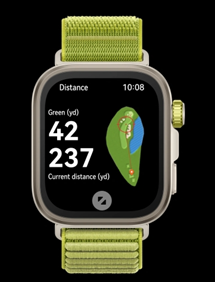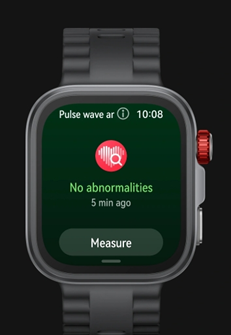How to Free Up Storage Space on Your Smartwatch?
Smartwatches are powerful mini-computers strapped to your wrist, but their limited storage can quickly become a headache. Unlike phones, they don’t offer expandable memory, meaning every photo, app, and workout log competes for the same small space. Before you know it, your watch slows down, apps crash, and you can’t even update your software. The problem isn’t always obvious—hidden cache files, unused apps, and old fitness data pile up silently. The good news? Freeing up storage is easier than you think. In this article, we’ll explore simple yet effective ways to reclaim space and keep your smartwatch running smoothly.

How Do I Check What’s Taking Up Space?
How to View Storage Usage
Most smartwatches have a built-in storage manager, but it’s often buried in settings. Navigate to Settings > Storage (or a similar menu) to see a breakdown of space usage. Some models categorize data by apps, media, and system files, while others show a simple pie chart. If your watch syncs with a companion phone app, checking storage from there might provide more details. Pay attention to the largest categories—usually apps, music, or workout logs. If your watch lacks a detailed breakdown, third-party apps (available via companion stores) can help analyze storage. Regularly monitoring this prevents surprises when you suddenly run out of space for updates.
Biggest Storage Hogs: Apps, Music, or Logs?
Apps, especially fitness and social media ones, often take up more space than expected. Music and podcasts downloaded for offline listening are another major culprit—just a few albums can consume gigabytes. Workout logs, particularly those with GPS data, also add up over time. To prioritize what to delete, consider what you actually use. If you haven’t opened an app in months, uninstalling it can free up significant space. Similarly, removing old playlists or syncing workout data to your phone (then deleting it from the watch) helps.
Hidden Cache Files You Didn’t Know About
Apps store temporary data (cache) to load faster, but this accumulates over time. Unlike phones, smartwatches rarely auto-clear cache, leading to wasted space. Some watches let you clear cache per app in settings, while others require uninstalling and reinstalling the app. A quick fix? Restarting your watch often clears some temporary files. For stubborn cache buildup, manually deleting unused apps is the most effective solution.
How Can I Delete Unnecessary Apps & Data?
Uninstalling Rarely Used Apps
Pre-installed apps and forgotten downloads clutter your watch’s storage. To uninstall, press and hold the app icon (if your watch has a touchscreen) or use the companion phone app. Some system apps can’t be removed, but disabling them prevents updates from taking more space. A good rule of thumb: if you haven’t used an app in two months, delete it. You can always reinstall it later when needed.
Clearing App Cache & Temporary Files
Unlike phones, smartwatches don’t always have a "clear all cache" option. Instead, go to Settings > Apps, select the app, and look for a "Clear Cache" button. Social media and weather apps are usually the worst offenders. If your watch doesn’t offer this feature, reinstalling the app achieves the same result. Just remember to back up any important data first.
Managing Offline Music & Podcasts
Offline music is convenient but eats up storage fast. Instead of storing entire playlists, keep only your most-listened tracks. Streaming directly from your phone via Bluetooth saves space. For podcasts, delete episodes after listening. Some podcast apps auto-remove played episodes—enable this feature to avoid manual cleanup.

How Do I Optimize Health & Workout Data?
Syncing & Deleting Old Fitness Logs
Fitness logs, especially those with heart rate and GPS data, take up surprising amounts of space. Most smartwatches automatically sync this data to your phone or cloud—once synced, delete old logs from the watch. Check your health app’s settings to ensure auto-sync is enabled. Manually exporting and deleting logs every few weeks prevents unnecessary storage bloat.
Reducing GPS Workout Storage Usage
GPS-tracked runs and bike rides generate large files. If you don't need detailed maps, disable GPS for indoor workouts. Alternatively, reduce tracking frequency in settings—recording data every 10 seconds instead of every second cuts file sizes significantly. For casual exercisers, turning off GPS entirely for routine workouts can save substantial storage space while still tracking basic activity metrics.
Limiting Voice Memo & Audio Storage
Voice recordings and audio notes accumulate quickly. Regularly transfer important memos to your phone and delete them from the watch. If your watch supports it, compress recordings to lower-quality formats to save space. Implementing a weekly review habit ensures you never lose important recordings while keeping your watch's storage optimized for daily use.
What’s the Best Way to Manage Media & Files?
Your smartwatch's storage can quickly fill up with unnecessary files if not managed properly. Fancy watch faces featuring animations or high-resolution graphics consume significantly more memory, so switching to a simpler design can free up valuable space—some models even allow storing custom faces on your paired phone instead. Notifications and messages also accumulate silently in the background; setting texts and emails to auto-delete after a week or regularly clearing them manually prevents this clutter. For watches that store photos (whether for contact icons or custom backgrounds), uploading images to cloud services and removing local copies makes a big difference, as even a few high-resolution pictures can occupy precious megabytes.
Conclusion
Running out of space doesn’t mean you need a new watch—just smarter habits. Regularly auditing apps, clearing cache, and syncing old data keeps storage under control. For fitness enthusiasts, managing GPS logs and offline media is key. If you’re considering an upgrade, Huawei remains a leader in smartwatch technology. The Huawei Fit 4 Pro offers smooth performance and powerful features, making it a great choice for those who need reliability without constant storage headaches. Whether optimizing your current device or shopping for a new one, these tips ensure your smartwatch stays fast and efficient.